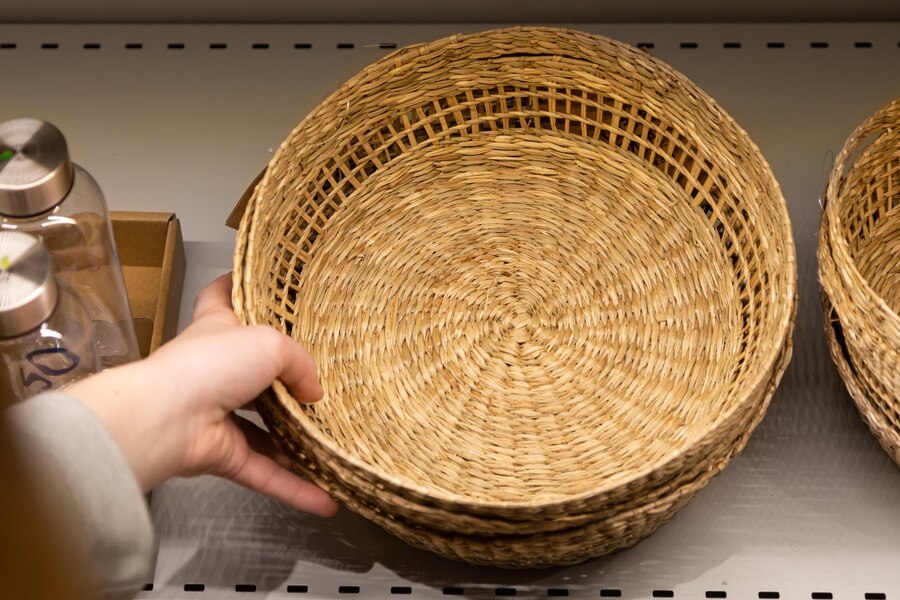Baskets, those seemingly simple vessels woven from natural materials, have played an indispensable role in human history for thousands of years. Far from being merely utilitarian, baskets represent a rich tapestry of cultural heritage, craftsmanship, and artistic expression. In this exploration, we delve into the world of exquisitely crafted baskets, tracing their origins, celebrating their diversity, and marveling at the intricate techniques employed by artisans worldwide.
Origins and Evolution of Basketry
Ancient Beginnings
Baskets are among the oldest known artifacts crafted by humans, dating back tens of thousands of years.
Early humans utilized readily available materials such as grasses, leaves, vines, and branches to weave containers for gathering, storing, and transporting food and other necessities.
Cultural Significance
Across civilizations, baskets have held profound cultural significance, serving as symbols of fertility, abundance, protection, and spirituality.
In indigenous cultures around the world, basket weaving traditions have been passed down through generations, embodying ancestral knowledge and connecting communities with their heritage.
Materials and Techniques
Natural Fibers
The choice of materials varies depending on geographical location and cultural practices. Common fibers include rattan, bamboo, willow, palm leaves, grasses, and straw.
Each fiber possesses unique qualities that influence the characteristics of the finished basket, from its strength and flexibility to its texture and color.
Weaving Methods
Basket weaving encompasses a diverse range of techniques, including coiling, plaiting, twining, and wickerwork.
These techniques require skillful manipulation of fibers, often with specialized tools such as needles, awls, and knives.
Regional Styles and Cultural Diversity
Native American Basketry
Native American tribes have a rich tradition of basketry, with distinct styles and motifs reflecting their respective cultures and environments.
Examples include the tightly woven, geometric patterns of the Hopi baskets and the intricate twined designs of the Tlingit people.
African Basket Weaving
Across the African continent, basket weaving traditions vary widely, with techniques ranging from coiling to plaiting.
In countries like Ghana and Senegal, artisans weave colorful baskets from grasses and palm leaves, often incorporating symbolic motifs and decorative elements.
Asian Basketry Traditions
In Asia, basket weaving flourishes in countries such as China, Japan, and Indonesia, each with its own distinctive styles and techniques.
Japanese bamboo basketry, known as “washi,” exemplifies the delicate artistry and precision of Asian craftsmanship.
The Art of Basket Making Today
Preserving Tradition
Despite the rise of modern manufacturing and synthetic materials, many artisans remain dedicated to preserving traditional basket weaving techniques.
Organizations and initiatives support indigenous communities and local craftspeople, helping to sustain their livelihoods and cultural heritage.
Innovation and Adaptation
While honoring tradition, contemporary basket makers also explore innovative approaches and experiment with new materials and designs.
Some artists blend traditional techniques with modern aesthetics, creating strikingly original pieces that resonate with collectors and art enthusiasts.
Appreciating Exquisite Basketry
Aesthetics and Functionality
Exquisitely crafted baskets transcend their utilitarian purpose, embodying beauty, elegance, and craftsmanship.
Whether displayed as decorative objects or used in everyday life, these baskets enhance their surroundings with their tactile textures and organic forms.
Collecting and Connoisseurship
Basketry has gained recognition as a legitimate art form, attracting collectors and connoisseurs who value the skill and artistry of master weavers.
Rare and exceptional baskets command high prices at auctions and are coveted for their historical significance and artistic merit.
Conclusion
In the world of exquisitely crafted baskets, tradition and innovation intertwine, creating a vibrant tapestry of cultural expression and artistic excellence. From the ancient techniques passed down through generations to the contemporary interpretations of skilled artisans, basketry continues to captivate and inspire. As we celebrate the timeless beauty of these humble yet extraordinary vessels, we honor the enduring legacy of human creativity and ingenuity.







